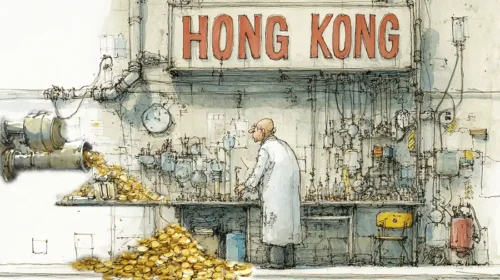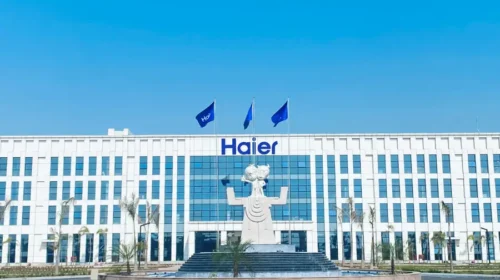Bank of Jinzhou: Bailed out, but not out of trouble

A one-year suspension of the regional lender’s shares will continue as it’s not yet ready to publish its financial results for 2022 and the first half of last year
Key Takeaways:
- Bank of Jinzhou’s stock will remain suspended pending publication of its results for 2022 and the first half of last year
- Beijing bailed out the bank in 2019 using state-owned banking giant ICBC, which was followed by more financial support from government-affiliated entities
By Warren Yang
Lingering turbulence at Bank of Jinzhou Co. Ltd. (0416.HK), a regional bank that ran into trouble and got a government bailout, is the latest chapter in a story of pretty much everything that can go wrong at this kind of former highflier. More broadly, the bank’s struggle may be just the tip of a much larger iceberg of vulnerable regional lenders being pummeled by a double-whammy of dubious business practices compounded by China’s feeble economy.
Last Friday, Bank of Jinzhou said it’s not yet ready to publish its results for 2022 and the first half of last year as it has yet to finalize its reorganization. This means that a yearlong trading suspension of its stock will continue.
In January last year, the lender asked the Hong Kong Stock Exchange to halt trading of its shares as it faced difficulties compiling its financial reports. And last February, it said its state-owned shareholders planned to undertake a series of transactions to “optimize its asset structure,” a phrase often given by troubled companies trying to get their finances in order.
That February statement is vague, but almost certainly means that major change is afoot at Bank of Jinzhou — though not for the first time. It’s an understatement to say the company has gone through a lot of turbulence in the past decade, vividly highlighting the vulnerabilities of myriads of similar smaller regional Chinese banks.
Largely restricted to local markets, such banks often target financially weaker individuals and businesses often shunned by their large state-owned peers that dominate lending to major companies. That makes these smaller banks more susceptible to large losses from defaults, which is exacerbated by lapses in governance that, for example, may lead them to find customers based on connections, without properly assessing their creditworthiness.
In the middle of 2015, Bank of Jinzhou experienced a high-profile hiccup with its plan to go public in Hong Kong as the city’s stock exchange asked for more information about its loan exposure to the parent of Hanergy Thin Film Power Group, a controversial solar power company.
That dealt a blow to the bank because it was under big pressure to replenish its capital buffer that had become overstretched by its recent rapid business expansion. The bank, based in Northeast China’s Liaoning province, finally managed to complete the Hong Kong IPO and raise $765 million through the listing near the end of 2015. That was just the beginning of its campaign to tap financial markets, and it went on to raise a total of about $3.4 billion by selling ordinary and preferred shares to other investors over the next three years.
But then signs of trouble quickly followed. In early 2019, the bank’s shares were suspended after it failed to publish its 2018 results on time. Making things worse, its auditor Ernst & Young quit in the summer of that year, saying it found indications that some loans made by Bank of Jinzhou weren’t used for their stated purposes.
Messy results
When Bank of Jinzhou finally disclosed its 2018 results, they were messy. Its losses on impaired assets — primarily defaulted loans — swelled nearly sevenfold from the prior year to erode all of its operating profit, which led to its first net loss since its IPO. The shares plunged more than 50% when they finally resumed trading in September 2019, falling below their IPO price.
In 2019, state-owned giant Industrial and Commercial Bank of China Ltd. (ICBC) came to the bank’s rescue, injecting about $436 million to become its top shareholder, in what was essentially a government-directed bailout. The following year, Bank of Jinzhou received more government financial support that ultimately totaled $1.7 billion funneled through a special-purpose vehicle controlled by China’s central bank and Liaoning Financial Holding Group Co. Ltd., a company set up by the Liaoning provincial government’s finance department.
In the meantime, the company’s stock continued to track downward, with the shares falling to nearly 90% below their IPO price before it requested the latest trading halt at the start of last year. The timing of that halt looks potentially tied to Hanergy, as it came just weeks after Hanergy founder Li Hejun was arrested in the lender’s home city.
The bank’s saga can serve as a cautionary tale, showing how rapid growth can backfire if companies lower their lending standards to achieve that growth. Concentration of a bank’s loan portfolio on a single institution, as is often the case with smaller banks in China, can further compound problems if that big customer runs into trouble.
Chances are that Bank of Jinzhou is just one of a growing number of regional Chinese lenders in China facing such rough times. Beijing rescued two other such lenders in 2019-2020, contrasting with a more hands-off approach in the West where smaller careless banks are often allowed to fail to discourage reckless practices.
A key source of risk for Chinese regional banks right now is their exposures to local government financing vehicles (LGFVs), which collectively are struggling to make their debt payments as local governments’ traditional major revenue source from land sales drops due to the prolonged property slump. Last October, S&P Global Ratings warned that Chinese regional banks could be hit with capital losses amounting to 2.2 trillion yuan ($310 billion) from LGFVs alone in the next few years.
Unsurprisingly, Bank of Jinzhou’s stock is now valued at a dismal price-to-book (P/B) ratio of just 0.3, although that’s higher than 0.15 for Bank of Tianjin (1578.HK) among its Hong Kong-listed peers, showing just how far these regional banks have fallen out of investor favor. Given Bank of Jinzhou’s long history of troubles, it will need to make an extraordinary turnaround to gain back investor confidence, which looks unlikely anytime soon in China’s worsening economy.
The Bamboo Works offers a wide-ranging mix of coverage on U.S.- and Hong Kong-listed Chinese companies, including some sponsored content. For additional queries, including questions on individual articles, please contact us by clicking here.
To subscribe to Bamboo Works free weekly newsletter, click here






